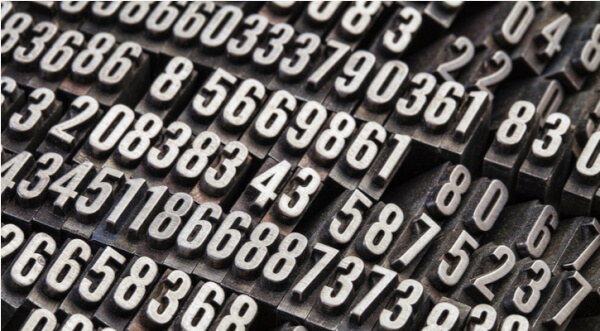How do I transfer money from my U.S. bank account? (Full guide)
If you want to transfer money to your US bank account, but not sure how, you've come to the right place. In this guide, we'll show you the answer.

IBANs and SWIFT codes are used by financial institutions around the world to guide international money transfers to the right accounts.
IBAN numbers refer to individual bank accounts, while a SWIFT code identifies a bank or branch where the specific account is held. Depending on where you’re sending money to, you could find that both are needed to make sure your payment ends up in the right account in the end.
If you plan to send money overseas, or expect to receive international payments, you’ll need to know about IBANs and SWIFT codes.
Bank transfers can get pricey and slow. And if you want to save on fees when you make an international transfer, you’ll want to know about Wise, too. Send money online with Wise to send money overseas up to 6x cheaper than with your regular bank - and arrange your payment in minutes online or using your smartphone.
Let’s start with SWIFT - the Society for Worldwide Interbank Financial Telecommunication¹. International transfers such as telegraphic transfers and wire transfers are often processed by banks using what’s known as the SWIFT network.
These payments usually require a SWIFT code to make sure the payment lands in the specific bank account it’s headed for.
The SWIFT network works by having partner banks cooperate to pass payments from one place to another, until they land in the correct account.
It’s like your money taking a series of connecting flights to end up in the final destination. SWIFT, technically, is the secure messaging system which sits behind this network.
By making sure banks can trust the communications they’re receiving about what money should be moved where, SWIFT provides a simple and safe way to make cross border payments.
| ⚠️ SWIFT payments are secure, but they’re not always the fastest option, and usually mean higher fees than alternatives like Wise. Up to 3 different banks can be involved in a single payment, which takes time - and each bank can also levy a service fee. |
|---|
If you’re new to international payments, get your full guide to the SWIFT payment network here. See how SWIFT transfers work, what they cost, and what details you have to provide when sending money using SWIFT.
SWIFT codes are one of the ways that banks in the SWIFT network make sure money arrives in the right account every time. It’s like having a zip code for your payment. You’ll still need an account number, just as you’d need a specific apartment number or street address if you were looking at a map. But a zip code is a good starting point to make sure your money is headed in the right direction.
SWIFT codes - which are also sometimes called SWIFT/BIC codes - have a standard format. You’ll have 8 - 11 alphanumeric characters, which contain all the information needed to get your payment on the way. SWIFT codes are made up of:
- A 4 letter bank code
- A 2 letter country code
- A 2 letter location code
- An optional branch code of up to 3 digits
Not sure if you have the right SWIFT BIC code for your payment? Check with this handy SWIFT code look up tool.
IBANs are international bank account numbers². These identify a specific bank account, including details of the country in which it’s held. Like SWIFT codes, IBANs have a specific format that’s standardized for ease.
IBANs are not used by all countries. All European Union, and most other European countries do use IBANs - but the United States and Canada do not. However, even in the US and Canada, IBANs are recognized as a format - and you’ll often need to provide one when you send a payment to a recipient elsewhere in the world.
You’ll have to provide a SWIFT code for most international transfers to show which bank and branch your payment is headed to.
However, the SWIFT code doesn’t specify a particular bank account - that’s where the IBAN comes in. An IBAN contains all a bank needs to make sure your payment ends up in your recipient’s account, even if it’s on the other side of the world.
IBAN lengths do vary slightly between countries, but the format is always the same. You’ll see the following in all IBAN numbers:
- A 2-letter country code
- 2 check digits
- Up to 35 alphanumeric characters which consist of the bank code, branch code and bank account number
Here's an example of a UK IBAN code:

Not sure if you have the right details to send an international transfer? Check out some more example IBAN numbers here.
If you’re sending or receiving international payments, you could save with Wise.
Wise international transfers use the real mid-market exchange rate with no markups and no hidden fees. You only ever pay a low, transparent fee, which can work out 6x cheaper than your regular bank. Just head to the Wise website or app, enter your recipient’s IBAN or SWIFT code, and your money will be safely on its way.
Open a free online Wise international account for instant, cheap transfers, a debit card to spend in any currency, bank details to get paid in 30 different countries, multi-currency direct debits, and other revolutionary stuff your bank simply can’t offer you.
IBANs and SWIFT codes are similar in that they’re both essential to keeping international payments moving around the world. However, the information they convey and how they’re used does vary.
While a SWIFT code will identify the particular bank and branch your recipient’s account is held in, you’ll also need an IBAN for many international payments, to make sure your money ends up in the right place in the end.
Hopefully that’s all the IBAN and SWIFT questions you ever had - and some you’d never even thought of, covered in this one handy guide.
If you want to know more about sending money internationally, get a full guide to how bank codes, sort codes, IBANs and SWIFT numbers all work here. And next time you need to make an international transfer, check out how you can save with Wise and the 6x cheaper Wise account.
Sources:
1]SWIFT - Discover SWIFT
2]SWIFT - IBAN, international bank account number
All sources checked on 18 October 2021
*Please see terms of use and product availability for your region or visit Wise fees and pricing for the most up to date pricing and fee information.
This publication is provided for general information purposes and does not constitute legal, tax or other professional advice from Wise Payments Limited or its subsidiaries and its affiliates, and it is not intended as a substitute for obtaining advice from a financial advisor or any other professional.
We make no representations, warranties or guarantees, whether expressed or implied, that the content in the publication is accurate, complete or up to date.

If you want to transfer money to your US bank account, but not sure how, you've come to the right place. In this guide, we'll show you the answer.

What are BSB numbers in banking & how do they work? Do you want to find out more about BSB codes? Read more here.

Your full guide to US banking expressions, from ABA to wire.

Your full guide to what is SWIFT and its meaning in banking.

IOF is a tax on various types of financial transactions in Brazil — including foreign exchange, investments, and credit. It’s levied at a range of rates...

Moving to Peru, or already there? You’ll need to brush up on how residency and citizenship works for foreign nationals living in the country. It centers...